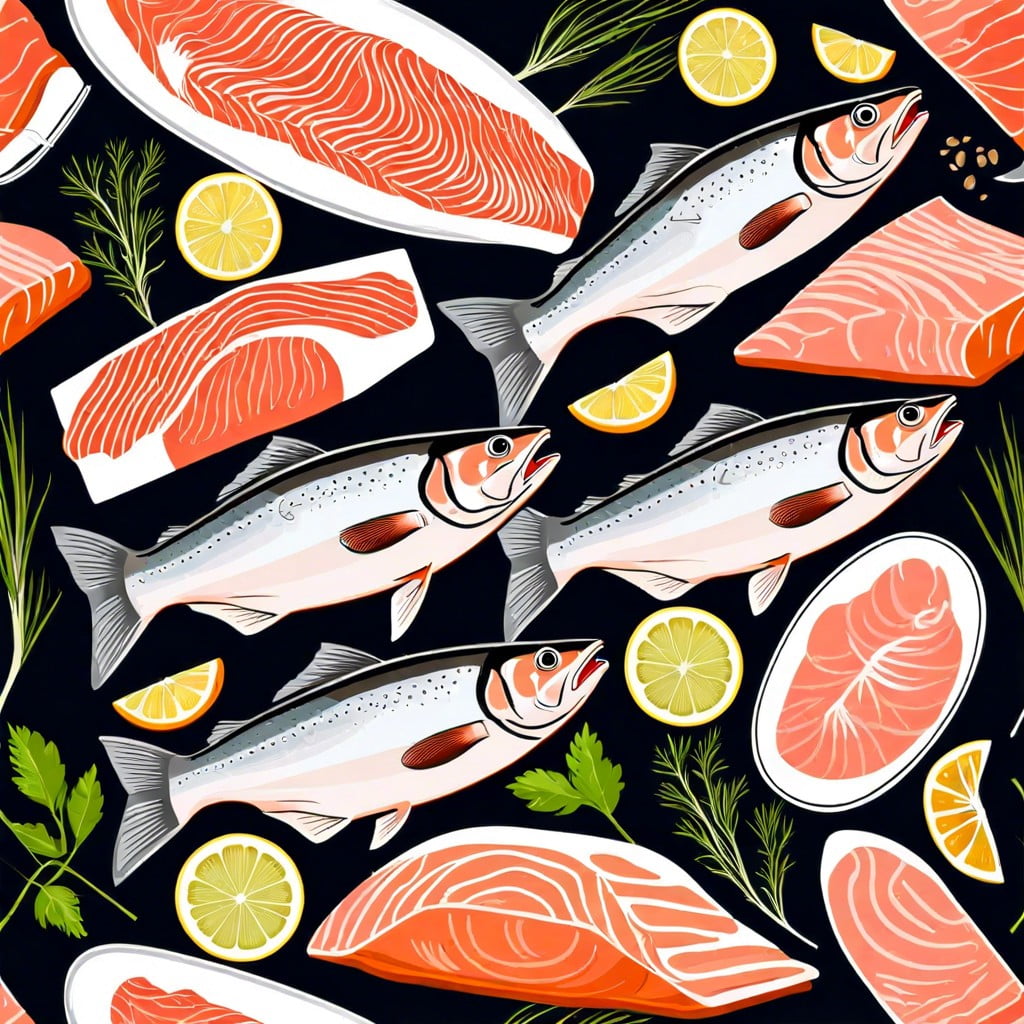Learn the steps to grill salmon perfectly, achieving a flaky interior and crisp skin every time.
Key takeaways:
- Choose the right type of salmon for your taste preferences.
- Prepare your grill properly for optimal cooking.
- Grill the salmon directly on the grill, skin-side down.
- Monitor the internal temperature to ensure perfect doneness.
- Enhance the flavor of grilled salmon with delicious sauces.
Types of Salmon to Choose From

Sockeye and King are your go-tos for a solid, meaty texture; they hold up like champions under the heat. Meanwhile, Coho and Atlantic shimmy onto the scene with a milder flavor and a bit more humility in the fat department. Perfect for those who prefer a lighter, more delicate taste.
Organic and wild-caught? That’s the sizzling debate. If purity and sustainability fire up your grill, wild-caught is the path you’ll want to trek. Farm-raised can be a wallet-friendly alternative, just scout for those that have swum in the best conditions.
Consider the cut, too. A slab with skin gives you a crisp finish, while pre-cut fillets or steaks promise a quicker turnaround at the grill-up showdown.
Grill Preparation for Salmon
A clean grate is your first mate in this culinary caper. Nobody likes fish sticking to old burger residue, so fire up the grill beforehand to burn off any build-up and give it a good scrub with a wire brush.
Next, lightly oiling the grate prevents a sticky situation, which is a quick ticket to flaky frustration. Dab a paper towel with high smoke point oil – think canola or vegetable – and using tongs, coat the bars well.
Preheating is pivotal. Aim for a medium heat, about 375 to 400 degrees Fahrenheit. This is the sweet spot where salmon cooks thoroughly without becoming charred autobiography. Too hot, and you’re auditioning for a smoke signal operator; too cool, and you’re watching paint dry.
Finally, remember that preparation honors the protein. Taking time to set up your grill correctly pays off in perfectly cooked salmon that breaks away with a fork, boasting a slightly smoky flavor and moist, tender center that makes taste buds sing.
How to Grill Salmon Directly On the Grill
Before slapping that fillet onto the grates, pat the salmon dry and let it rest at room temperature for 10-15 minutes. This step is crucial for even cooking. Brush the skin side with oil to avoid a sticky situation – because we want our relationship with the grill to remain non-clingy! Spice it up as you please; a simple seasoning can work wonders.
Now, place the salmon skin-side down directly on the grill – no flip-flopping here, as it’ll cook through just like that. Give it space; overcrowding is a no-no. It’s not just a fish fry, it’s a dance of heat and timing. Keep that lid down for a warm embrace, ensuring the smoke whispers the flavors in.
A gentle press with a spatula will tell you when it’s time to move on (and by that, we mean off the grill). Aim for 6-8 minutes per inch of thickness. Once the flesh flakes easily, it’s time for your taste buds to prepare for liftoff.
Grilled Salmon Internal Temperature
Hit the sweet spot with your fish’s internal temp to avoid dry, overcooked disasters. Aim for 145°F (63°C) as the FDA’s recommendation for safety. However, many chefs swear by pulling the salmon off the heat at a lower temperature, such as 125°F (52°C), to maintain moisture and tenderness. Use a reliable meat thermometer, inserting it into the thickest part of the fillet. Remember, the temperature will rise slightly as it rests, so account for that carry-over cooking. Keep a sharp eye on the heat – salmon goes from perfectly done to overdone in a flash.
Sauces to Enhance Grilled Salmon
A drizzle of the right sauce can elevate your grilled salmon from great to phenomenal. Consider the following flavor boosters:
- Dill sauce, with its herby and citrusy undertones, is a classic pair that plays well with the fatty richness of salmon.
- A glaze of maple syrup and Dijon mustard offers a perfect balance of sweet and tangy that caramelizes beautifully on the hot grates.
- Teriyaki sauce, when brushed on a few minutes before the salmon finishes cooking, infuses the fish with a savory umami essence that’s hard to resist.
- For a smoky kick, chipotle lime sauce provides a zest that complements the salmon’s natural flavors without overpowering them.
Remember, the key is to apply sauces during the last few minutes to avoid burning sugars and to preserve that glorious crust and moist, flaky interior.

